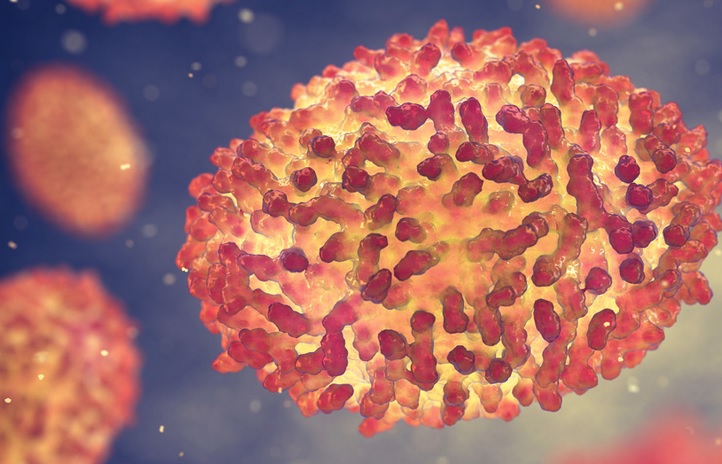
Human monkeypox (MPX) is a zoonotic disease caused by the MPXV virus, with a clinical picture similar to smallpox. Monkeypox is endemic to parts of central and western Africa, and is not a reportable disease in the European Union. From 2018 to the end of 2021, 12 travel-related cases of MPXV outside Africa were reported. Since 2022, for the first time, several outbreaks have been reported in EU member states and around the world, and so far nearly 500 cases have been recorded in France.
Monkeypox virus is a double-stranded DNA envelope virus of the genus Orthopoxvirus of the family Poxviridae. Like all “poxviruses,” monkeypox has an extraordinary drought resistance, and a higher tolerance to temperature and pH than other enveloped viruses.
These characteristics greatly favor its persistence in the environment.
Substances from infected patients (such as skin scales) or narcotic substances (such as bed linen) may remain infectious for months or even years. However, smallpox viruses are sensitive to disinfectants.
The incubation period for MPX is usually 6 to 13 days but can range from 5 to 21 days. Human monkeypox infection often presents with a combination of the following symptoms: fever, headache, chills, fatigue, asthenia, swollen lymph nodes, back pain, and muscle aches. Usually, within three days of these symptoms appearing, a rash develops that starts at the site of the initial infection and spreads rapidly to other parts of the body. These lesions, generally within 12 days, develop simultaneously from the maculopapular stage to papules, vesicles, blisters, and crusts before molting. For most affected patients, MPX is a self-limiting disease, usually lasting 2 to 4 weeks before full recovery.
Monkeypox is known to be transmitted by animal transmission and infection has been reported after human-to-human transmission, and this study assessed the risks of transmission through contact with contaminated surfaces.
Accurate sampling in patient rooms
The researchers took different samples from several locations in the rooms of two infected patients, and adjacent rooms in the hospital, where hospital staff put on and took off personal protective equipment (PPE). Contamination was estimated as up to 105 viral copies/cm2 on the surfaces by polymerase chain reaction and the virus was successfully isolated from the surfaces with more than 106 copies. In summary, the analysis found that:
-
All surfaces touched by patients have viral contamination;
- The highest loads are detected in the baths;
- Cloth surfaces such as towels, gowns, or pillowcases used by patients also show viral contamination.
Viral contamination is not necessarily synonymous with infectious risk: The authors point out that there are currently no accurate data on the dose of virus that can lead to monkeypox in humans: “Despite heavy contamination up to 105 dpi/cm2 as well as successful virus recovery up to a total of >106 copies. Our results do not provide evidence that infection can occur through contact with contaminated surfaces.” Finally, detection of viral DNA by PCR does not necessarily mean that, in general, there is a risk of infection.
However, strict prevention is necessary: However, prevention of the spread of the virus from symptomatic patients must remain strict. Researchers stress the importance of regular disinfection of frequent contact points of hands and skin during care operations, regular cleaning of rooms, and disinfection of surfaces with virusicides. To reduce the risk of infection transmission in hospitals.






